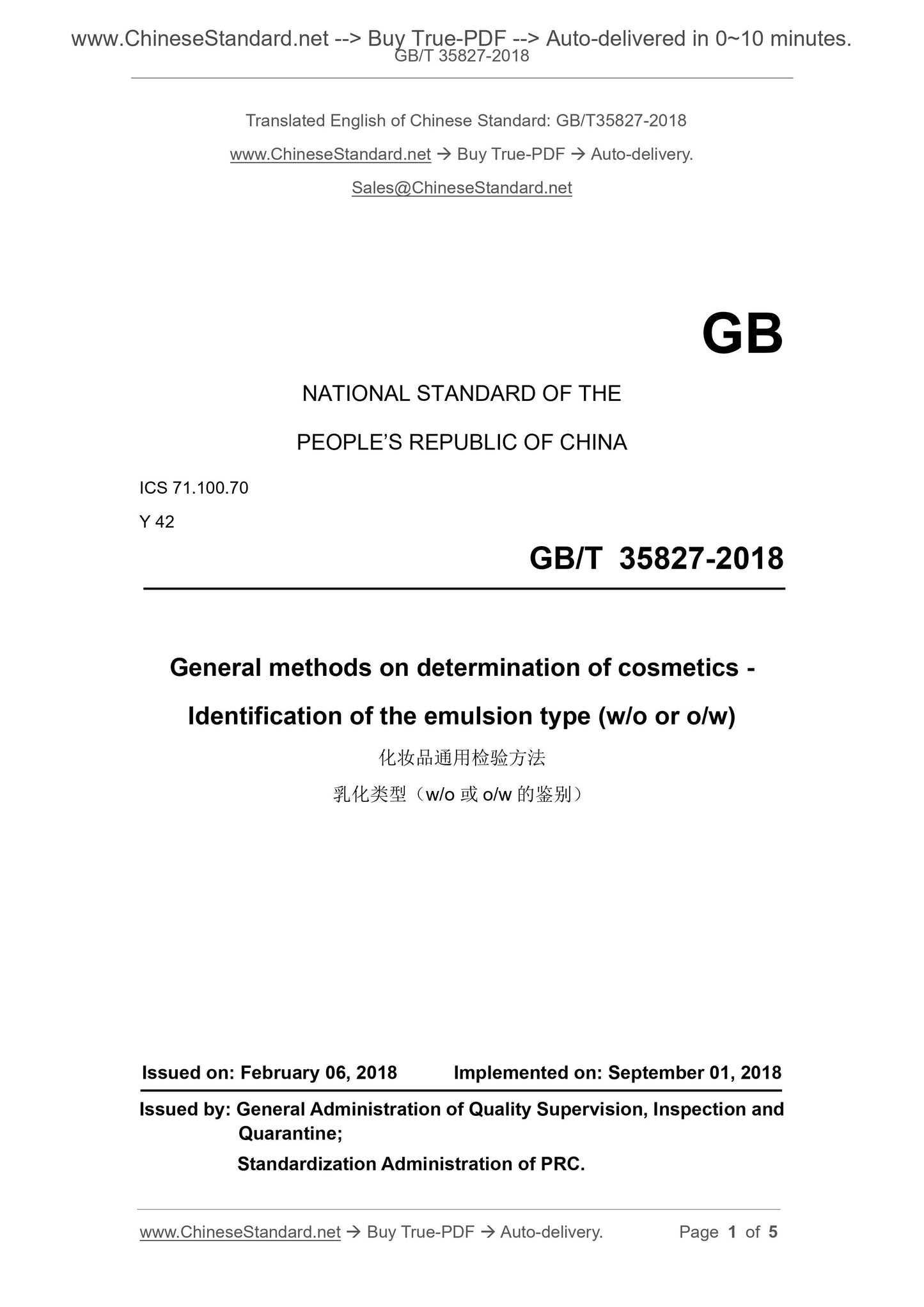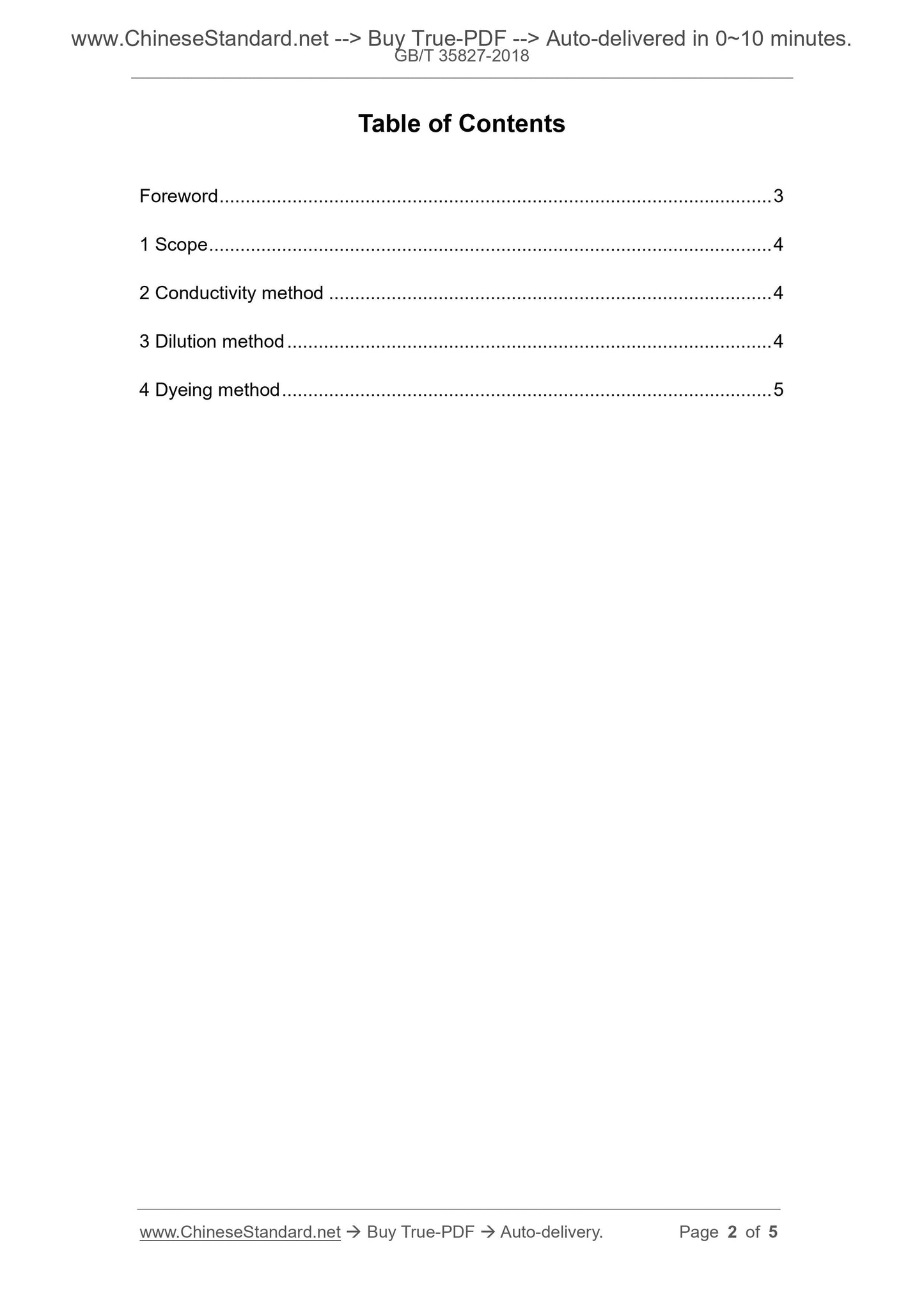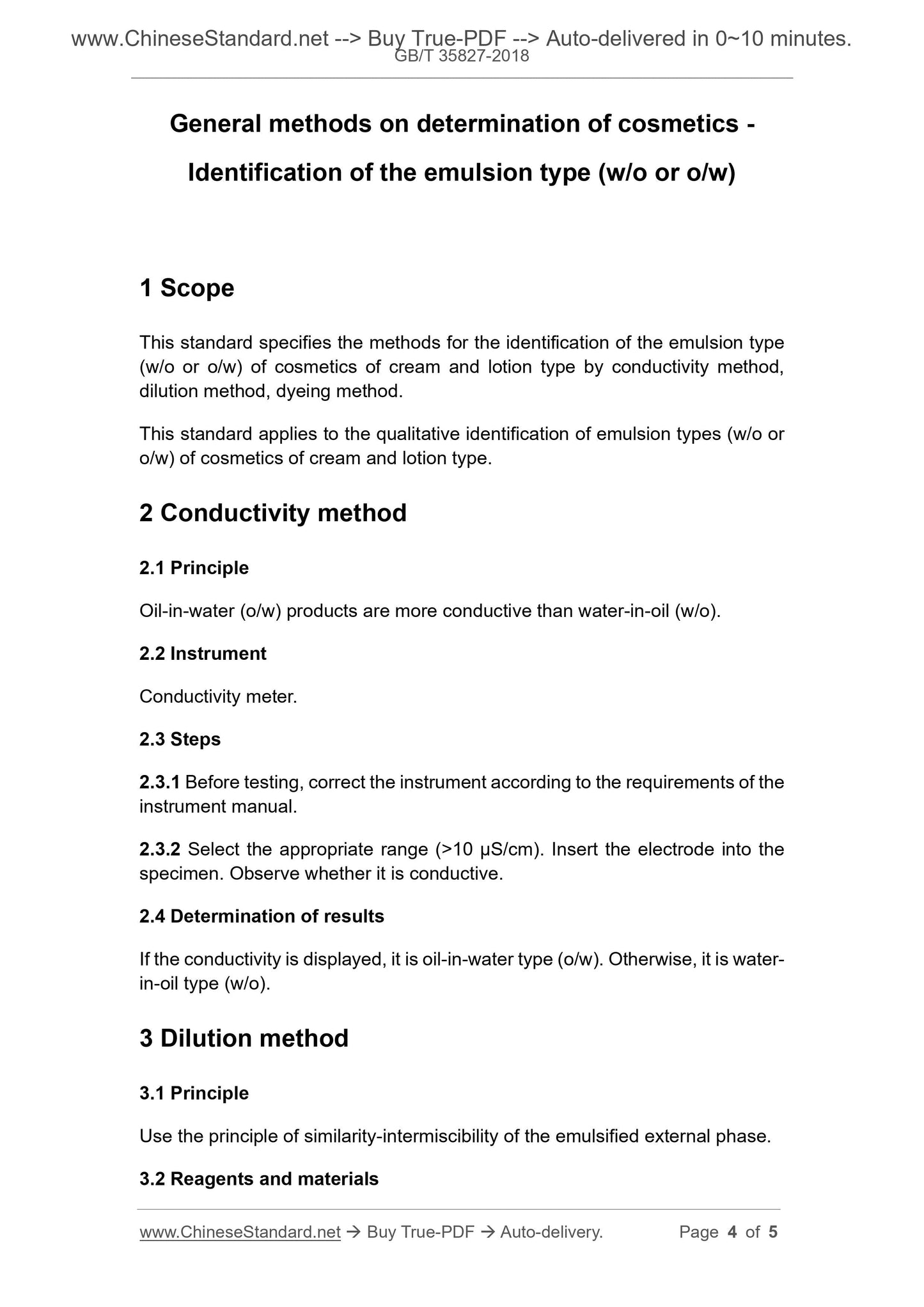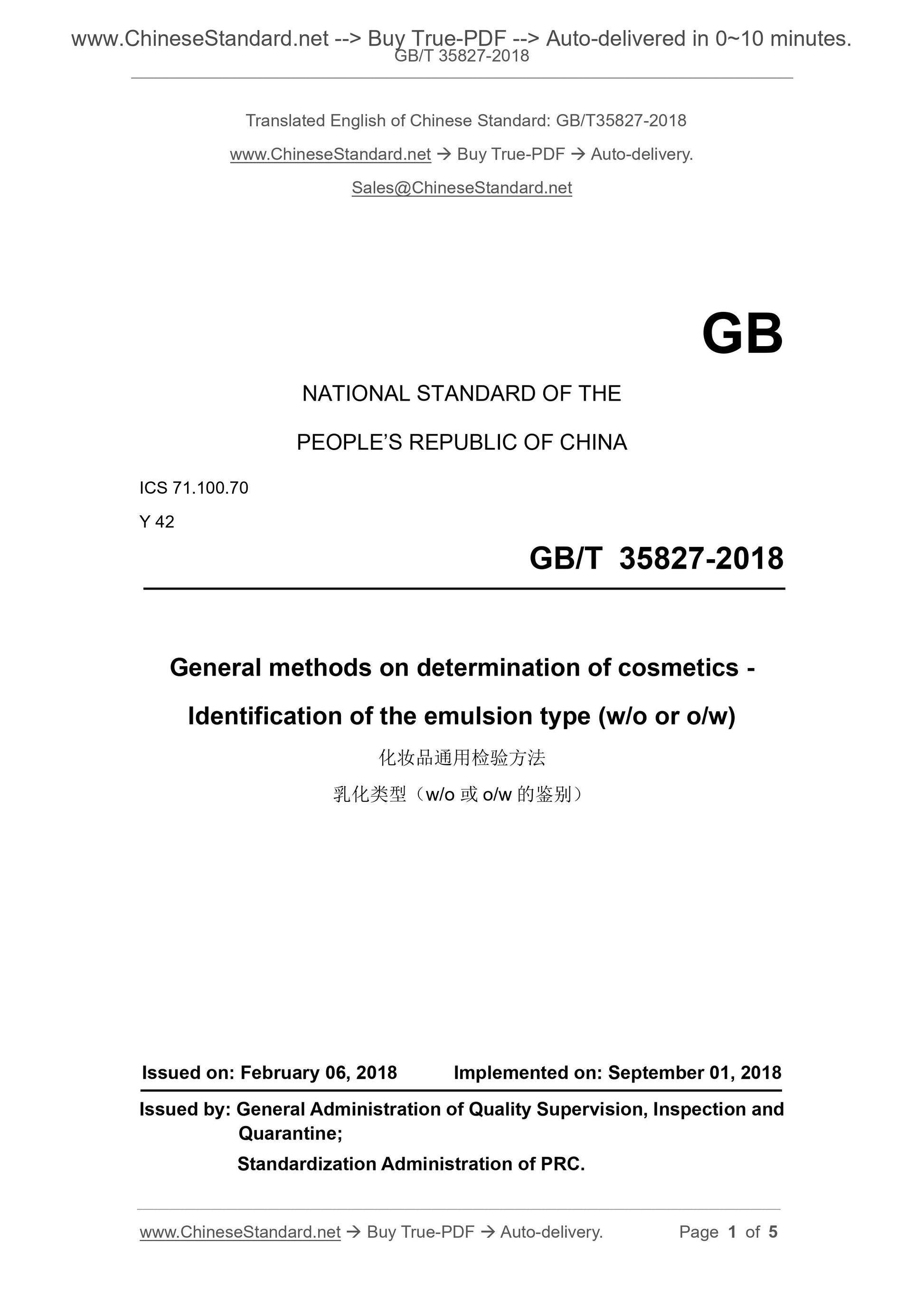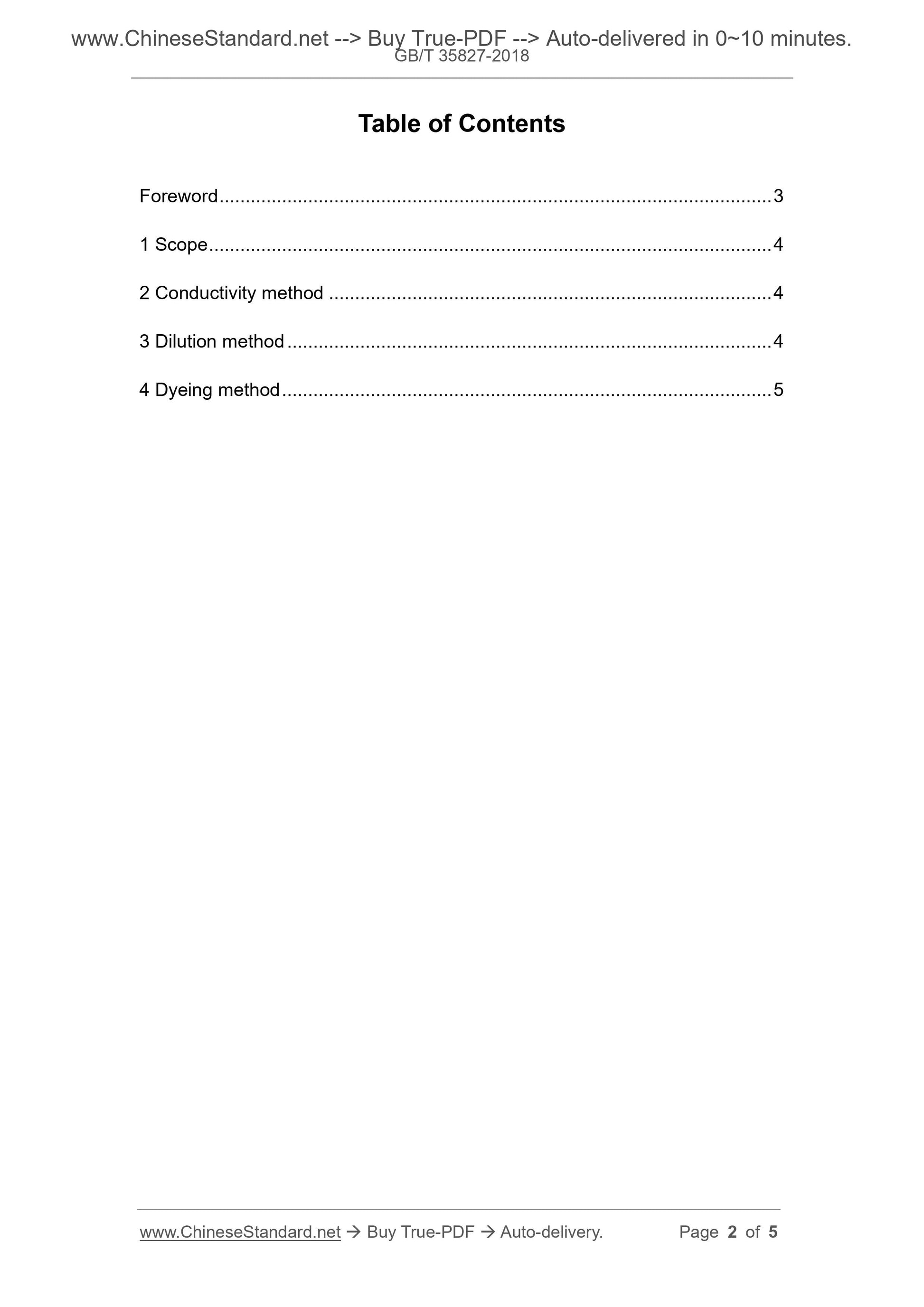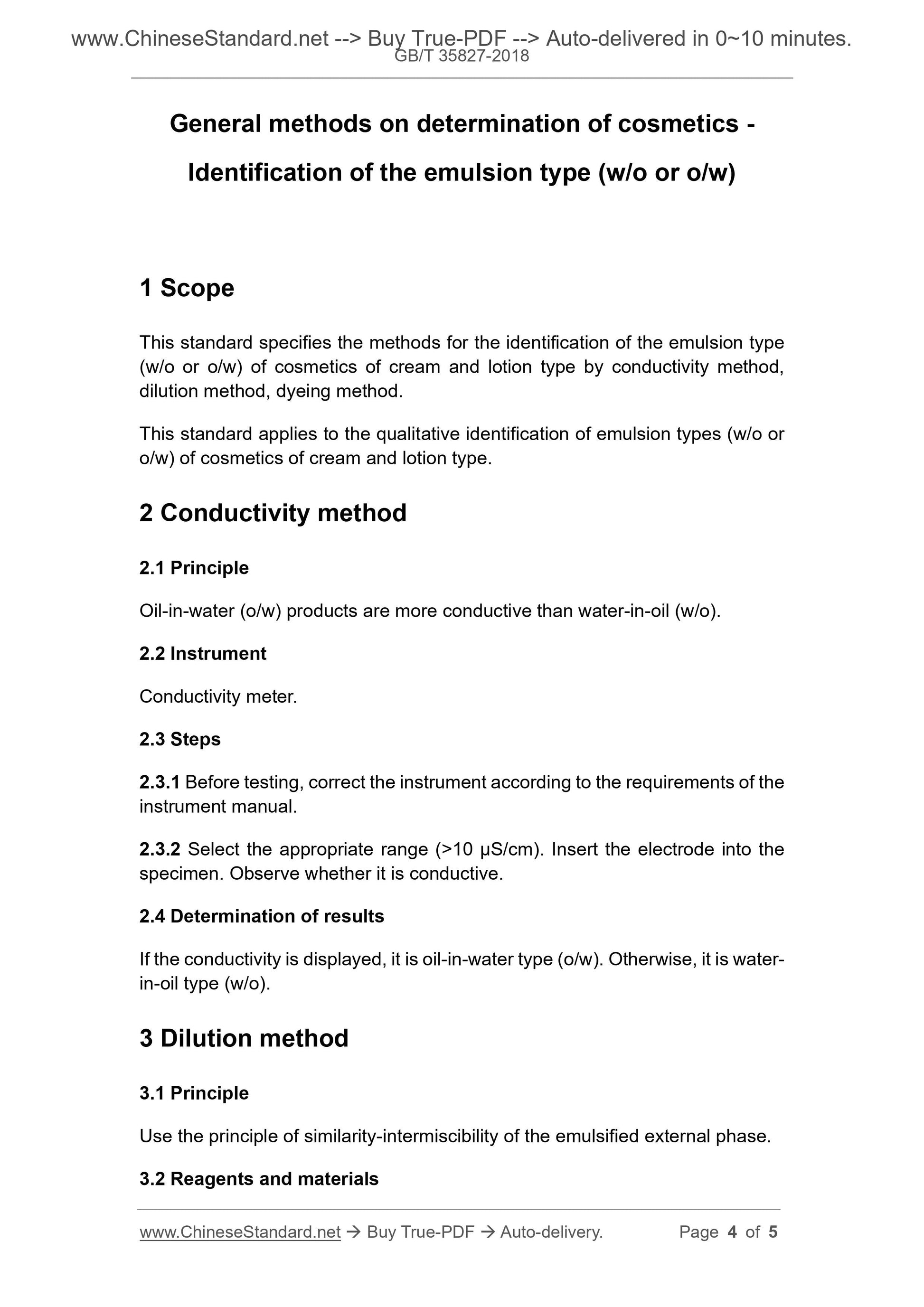1
/
of
3
www.ChineseStandard.us -- Field Test Asia Pte. Ltd.
GB/T 35827-2018 English PDF (GB/T35827-2018)
GB/T 35827-2018 English PDF (GB/T35827-2018)
Regular price
$90.00
Regular price
Sale price
$90.00
Unit price
/
per
Shipping calculated at checkout.
Couldn't load pickup availability
GB/T 35827-2018: General methods on determination of cosmetics -- Identification of the emulsion type (w/o or o/w)
Delivery: 9 seconds. Download (and Email) true-PDF + Invoice.Get Quotation: Click GB/T 35827-2018 (Self-service in 1-minute)
Newer / historical versions: GB/T 35827-2018
Preview True-PDF
Scope
This standard specifies the methods for the identification of the emulsion type(w/o or o/w) of cosmetics of cream and lotion type by conductivity method,
dilution method, dyeing method.
This standard applies to the qualitative identification of emulsion types (w/o or
o/w) of cosmetics of cream and lotion type.
Basic Data
| Standard ID | GB/T 35827-2018 (GB/T35827-2018) |
| Description (Translated English) | General methods on determination of cosmetics -- Identification of the emulsion type (w/o or o/w) |
| Sector / Industry | National Standard (Recommended) |
| Classification of Chinese Standard | Y42 |
| Classification of International Standard | 71.100.70 |
| Word Count Estimation | 6,661 |
| Date of Issue | 2018-02-06 |
| Date of Implementation | 2018-09-01 |
| Issuing agency(ies) | State Administration for Market Regulation, China National Standardization Administration |
Share
